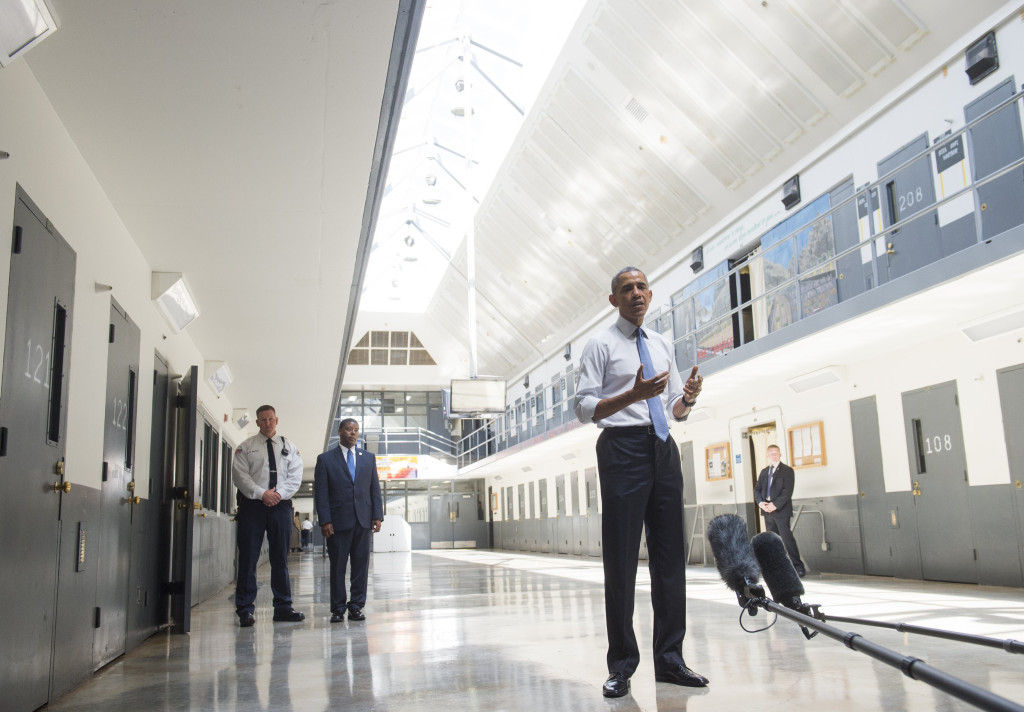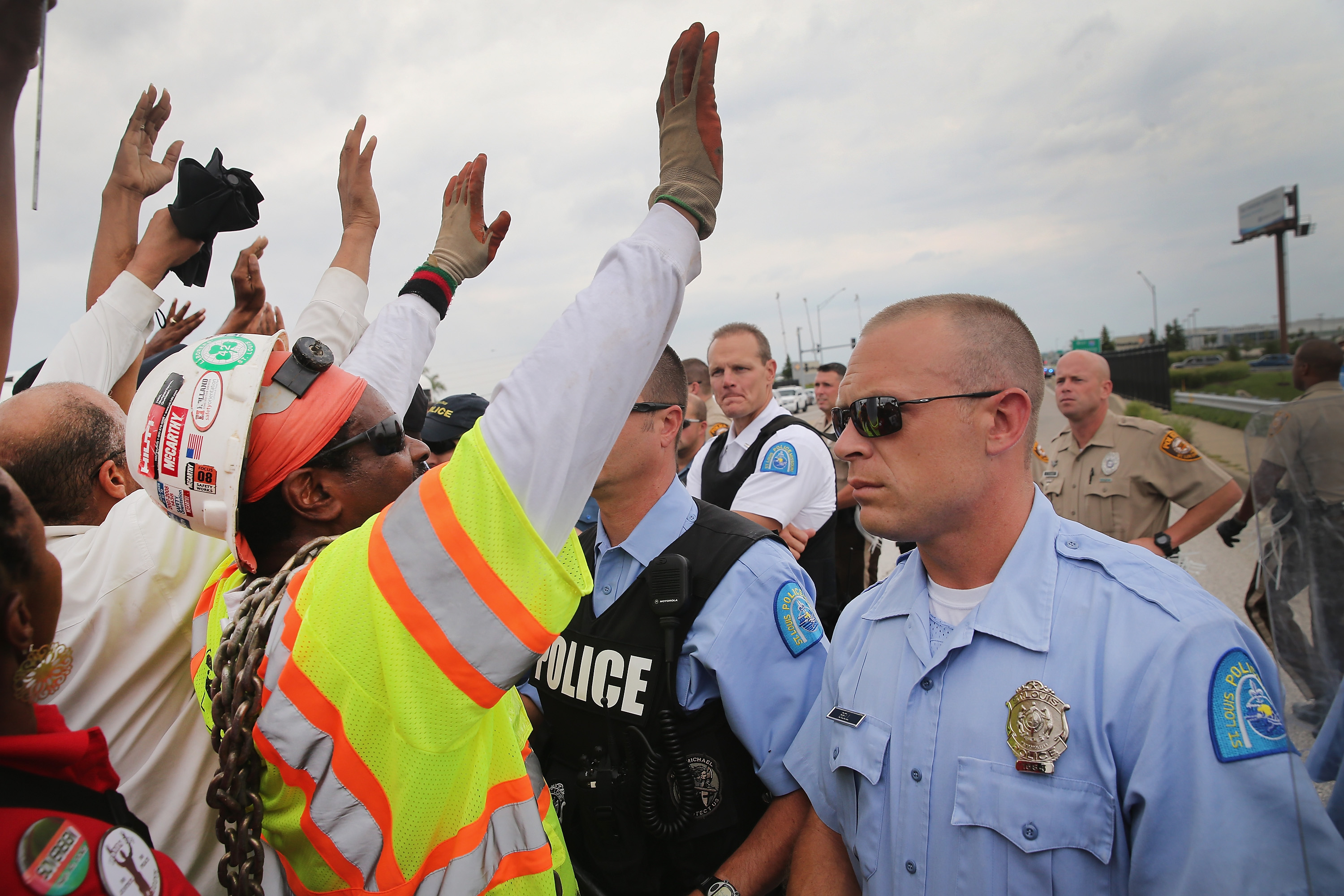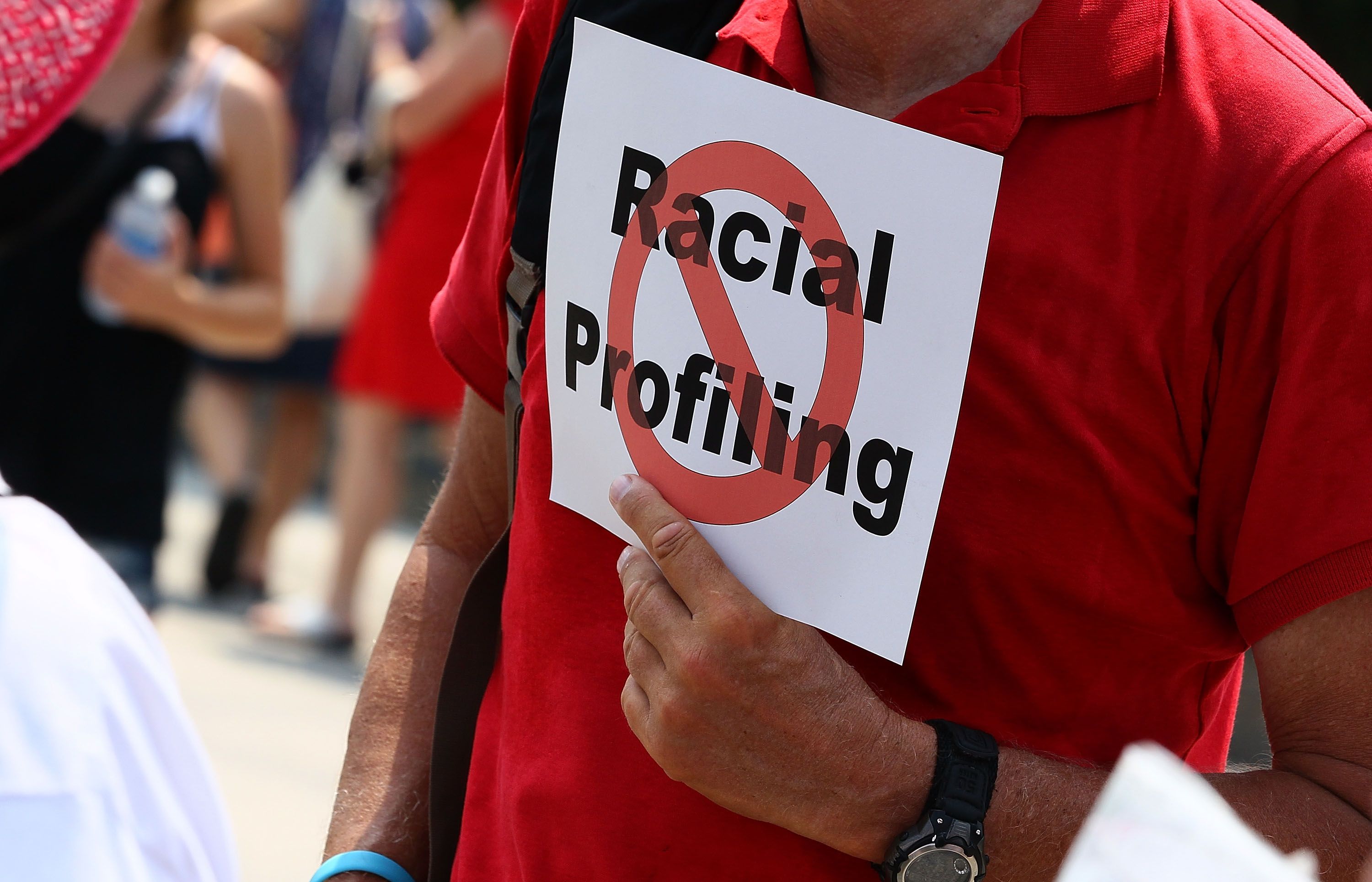
US President Barack Obama speaks as he tours the El Reno Federal Correctional Institution in El Reno, Oklahoma, July 16, 2015. Obama is the first sitting US President to visit a federal prison, in a push to reform one of the most expensive and crowded prison systems in the world. (Photo credit:SAUL LOEB/AFP/Getty Images)
This article originally appeared on The Huffington Post
Last week, President Obama put a much-needed spotlight on the vicious cycle of mass incarceration. In the past three decades, the prison population in the U.S. has ballooned due to a number of factors that have created a system rife with discrimination and other abuses. And the burden falls disproportionately on low-income people and people of color.
The President made a historic visit on July 16 to a federal prison — the first sitting president to do so. His visit spotlighted the massive overcrowding problem — he was shown one 9-by-10-foot cell that sometimes holds three prisoners — that is the result of a broken criminal justice system.






